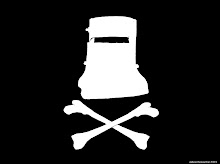All the night's participants had been having life struggles with work and sleep and study and not getting enough of one or too much of the other and the general lassitude and wear that has accrued like a ships barnacles around your bow a few weeks into your journey through the winter...
Blog Archive
Blog Lacuna
We have left the bunkers, fuelled up, and are to the savannah, to free roam for a time. The original forest is in the distance, Varosha Resort out there somewhere.
These places are a nexus of fragments and scattered remains. With its strange grasslands and nebulous island in-worlds, and nestled between savage and savant, the savannah is the ideal human environment. The fable bridges a gentle way across.
M. L. Darling intends this space as an opportunity to follow the veins of fable across a landscape with a simian commitment to an aesthetic of evolutionary dreaming.
Please join us.
Your contributions are welcome.
email: morpheusdrlng@gmail.com
Friends of the Savendi
Saturday, January 9, 2010
Ghost In the Cell
Subscribe to:
Post Comments (Atom)



5 comments:
The "ghost in the machine" is British philosopher Gilbert Ryle's derogatory description of René Descartes' mind-body dualism. The phrase was introduced in Ryle's book The Concept of Mind (1949) to highlight the perceived absurdity of dualist systems like Descartes' where mental activity carries on in parallel to physical action, but where their means of interaction are unknown or, at best, speculative.
Much of the following material is from Arthur Koestler's discussion in his 1967 book, The Ghost in the Machine, which takes Ryle's phrase as its title. The book's main focus is mankind's movement towards self-destruction, particularly in the nuclear arms arena. It is particularly critical of B. F. Skinner's behaviourist theory. One of the book's central concepts is that as the human brain has grown, it has built upon earlier, more primitive brain structures, and that these are the "ghost in the machine" of the title. Koestler's theory is that at times these structures can overpower higher logical functions, and are responsible for hate, anger and other such destructive impulses.
- Wiki
I know how men in exile feed on dreams of hope.
Aeschylus, Agamemnon.
He felt that his whole life was some kind of dream and he sometimes wondered whose it was and whether they were enjoying it.
- Douglas Adams "Hitchhikers..."
What do you mean, a ''virtual experience?''
l mean your wife, your daughter. the divorce, the affair
They're all fake memories. Like a dream.
Someone was using you to ghost-hack a government official.
No That's impossible!
l've been to your apartment.
No one's there. lt's a one-room apartment.
Yeah, l moved there when we split up--
You've been living there for ten years!
You have no wife, no child.
Your family exists only in your mind.
Look. This is the picture you showed to your partner.
Who is it of?
But, she was there. My daughter
Smiling like an angel
What's your daughter's name?
Where did you meet your wife, and when?
How many years ago did you get married?
Who do you see in the picture?
How do l get rid of these fake memories?
l'm sorry. With our current technology
There've been two successful deprogrammings
but l can't recommend it to you.
l'm really sorry.
- Ghost in the Shell
Host is in Hell!
If you ever have a choice between being possessed by the devil and being possessed by a Sacculina carcini, opt for the devil – no contest. A female sacculina begins life as a tiny free-floating slug in the sea, drifting around until she encounters a crab. When that fateful day arrives, she finds a chink in the crab’s armor (usually an elbow or leg joint) and thrusts a kind of hollow dagger into its body. After that, she (how to put this?) "injects" herself into the crab, sluicing through the dagger and leaving behind a husk. Once inside, the jellylike sacculina starts to take over. She grows "roots" that extend to every part of the crab’s body – wrapping around its eyestalks and deep into its legs and arms. The female feeds and grows until eventually she pops out of the top of the crab, and from this knobby protrusion, she will steer the Good Ship Unlucky Crab for the rest of their co-mingled life. Packed full of parasite, the crab will forgo its own needs to serve those of its master. It won’t molt, grow reproductive organs, or attempt to reproduce. It won’t even regrow appendages, as healthy crabs can. Rather than waste the nutrients on itself, a host crab will hobble along and continue to look for food with which to feed its parasite master.
neatorama.com
Post a Comment